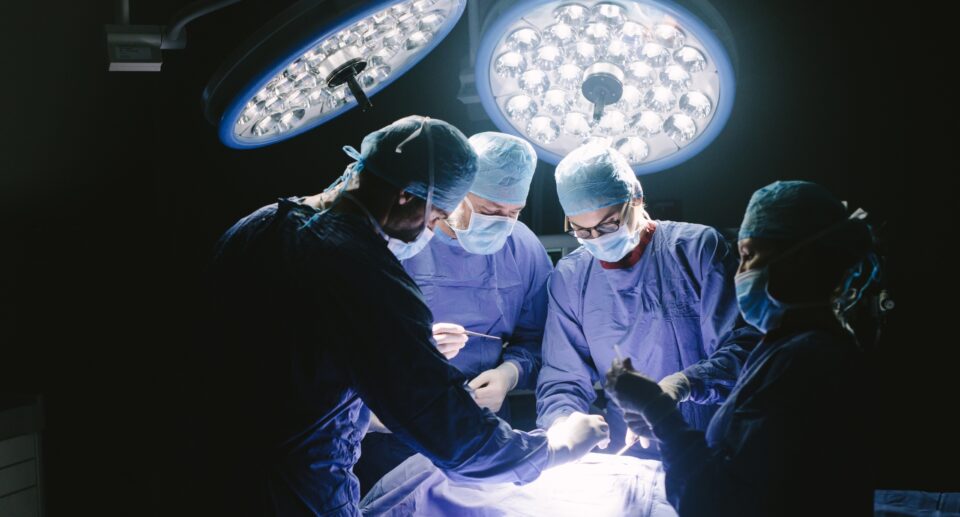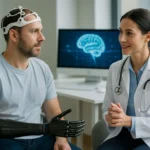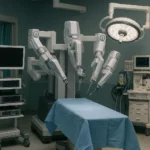Bionic Limbs & Prosthetic Arms: Restoring Mobility to Amputees
Amputation took the world away from the life of a person, but with the success of bionic arms and age-progressive prosthetic limbs, a modern amputee has that much to restore to his or her own life as an independent and confident person. It may be a prosthesis of the arm or the leg, or it may be neuroprosthetics, but human beings today are being assisted by technology to regain their movement, independence and faith.
But what are bionic limbs and prostheses, and how do they work? Let’s explore how bionic limb prosthetic technology is transforming lives and why India is becoming a low-cost prosthetic care hub.
What are bionic limbs and prosthetics?
Bionic limbs have come a long way from wooden limbs to advanced prosthetic limbs under the control of brain signals.
- Bionic limbs make use of neuroprosthetics and electro capturing in the sense that they can be operated by electrical signals from the brain or muscles.
- On the other hand, traditional prosthetic limbs try to restore function and mobility in amputees.
Some of the various kinds of prosthetic limbs are:
- Prosthetic arm: As a result, it compels an amputee to redo the action of holding, gripping, and manipulating things.
- Prosthetic hands: Contemporary ones possess finger mobility and clapping.
- Prosthetic leg: Enables one to walk, jog, and even play sports.
- Prosthetic eye: In such cases, artificial eye replacement or prosthetic eye is used to improve appearance after losing an eye.
All of these prosthetics are extremely crucial in improving the lives of amputees.
Bionic Limbs and How They Function?
Unlike previous prosthetics, bionic legs and arms function as naturally as possible due to sophisticated neuroprosthetics and robots. This is how it works:
- Sensors & Nerve Signals: Electrodes strike the skin, which detects the signals of muscles and enables movement.
- Microprocessors & AI: They decode signals and allow the prosthetic arm or leg to move smoothly.
- Power Source: Bionic limbs are powered with rechargeable batteries, making them more efficient.
Moreover, these bionic technologies make prosthetic arms and prosthetic legs more functional, thereby restoring mobility and independence.
Benefits of Bionic Limbs & Prosthetics
- Mobility regained: Amputees run, walk, and perform their day-to-day activities. As a result, they regain a sense of normality and freedom.
- Independence: Able to manage independently without constant support. Therefore, individuals experience a greater sense of autonomy.
- Boosts Confidence: Additionally, cosmetic prosthetics like a prosthetic boob or a prosthetic eye make people feel confident about their bodies.
- Relief from pain: Some bionic limbs reduce phantom limb pain. Thus, they offer both physical and emotional relief for the wearer.
- New Motions: A bionic prosthetic leg makes it possible for amputees to walk normally.
The goal of prosthetic limbs is to gain independence, mobility, and new life.
Challenges and Limitations in Bionic Limbs
There are limitations despite progress:
- High Cost: Indian prosthetic leg costs range from ₹40,000 to ₹10,00,000, based on technology.
- Limited Access: Not all patients can take advantage of prosthetic facilities due to affordability.
- Learning Curve: Physiotherapy and time are the requirements to get accustomed to bionic limbs.
Fortunately, when it comes to advanced prosthetic care, India offers low-cost, high-standard prosthetic facilities to international patients.
The Evolution of Prosthetics: From Wooden Legs to Bionic Limbs
- Advancements in Prosthetic Technology: Over the years, from basic wooden limbs to modern, AI-powered bionic limbs, prosthetics have drastically improved in terms of functionality, appearance, and control, thereby allowing users to perform complex movements with ease.
- The Role of Neuroprosthetics: In recent years, neuroprosthetics, which use brain or muscle signals to control prosthetic limbs, have revolutionized prosthetics, thereby offering users more natural movement and independence.
The Role of Neuroprosthetics in Restoring Movement for Amputees
- How Neuroprosthetics Work: In fact, these devices connect to the nervous system and use electrical signals to control prosthetic limbs, allowing for smoother, more natural movement.
- Impact on Quality of Life: As a result, by restoring function to amputated limbs, neuroprosthetics help amputees regain independence, perform daily tasks, and boost confidence.
Overcoming the Challenges of Bionic Limb Adoption: What You Need to Know
- High Costs and Accessibility: While bionic limbs offer incredible benefits, their high cost can be a barrier to many, though solutions are emerging in countries like India to make them more affordable.
- Learning and Adaptation: However, adopting bionic limbs requires time and training, as users must learn how to adapt to the new technology and incorporate it into their daily routines.
Why India for Prosthetic Treatment?
India is the go-to place for low-cost, high-standard prosthetic treatment.
- Reasonably Priced Procedure: India’s prosthetic leg is reasonably priced compared to Western countries.
- Advanced Medical Technology: The best and most advanced hospitals use bionic limb technology.
- Top-notch Professionals Handpicked: World-class prosthetic and neuroprosthetic experts are available.
- International Medical Center: Thousands of international patients visit annually.
In addition, it’s a place that’s frequented for affordable and cutting-edge prosthetic treatment.
Regimen Healthcare: Your Guide to Affordable Bionic Limb Treatment
To sum up, Regimen Healthcare is a trusted medical tourism company that helps patients locate top-quality treatment hospitals, prosthetic experts, and rehab centers in India.
Services We Offer:
- Consultation with Prosthetic Experts
- Affordable Treatment Packages
- Visa & Travel Assistance
- Personalized Patient Care
As a result, with Regimen Healthcare, you can now afford the best bionic limb and prosthetic care at the lowest cost.
The Future of Bionic Limbs: Advancements in Technology and Accessibility
Brain-Controlled Prosthetics: The future prosthetics will be brain-controlled.
Bionic Limbs at an Affordable Price: Prices will go down because of advances.
Bionic Hands & Legs As If You Own Them: AI-controlled prosthetic limbs will react naturally.
Looking ahead, the future of bionic limbs is promising, with high-tech and affordable options on the horizon.
Conclusion
High-end bionic limbs are transforming lives—restoring mobility, autonomy, and confidence in amputees. With cutting-edge technology and economical treatment, especially in India, patients can now resume controlling their lives.
What’s more, at Regimen Healthcare, we help you meet the best prosthetic experts and hospitals to make recovery a smooth, economical experience.
All you have to do is make that initial step into a new life. We’re here to accompany you.
Get Your Life Back with Regimen Healthcare!
Do you or a loved one require affordable, cutting-edge bionic limbs or prosthetic treatment?
Regain your footing with the top-of-the-line treatment in India!
Call Regimen Healthcare Now!
Call/WhatsApp: +91-9310356465
Website: www.regimenhealthcare.com
Email: [email protected]
With that in mind, let us help you take the first step towards an active new life with world-class prosthetics!
Frequent Asked Questions (FAQs)
1. Do prosthetic arms and hands have a sense of touch?
There is no sense of feeling in current bionic limbs, although a lot of research is being done on sensory prosthetics.
2. How long does it take to adjust to a prosthetic limb?
It is a patient-to-patient variable, although most patients do adjust in 3-6 months after receiving proper therapy.
3. How do I receive treatment in India through Regimen Healthcare?
Just reach out to us, and we will guide you through doctor choice, travel, and treatment.
4. Can prosthetic limbs feel like natural limbs?
Currently, prosthetics don’t have touch sensitivity, but research is underway to add sensory feedback.
5. How does a bionic limb work?
In simple terms, bionic limbs use brain or muscle signals, processed by AI and microprocessors, to control movement.
6. What types of prosthetic limbs are available?
To illustrate, prosthetics include arms, hands, legs, and even eyes, helping amputees regain mobility and appearance.







